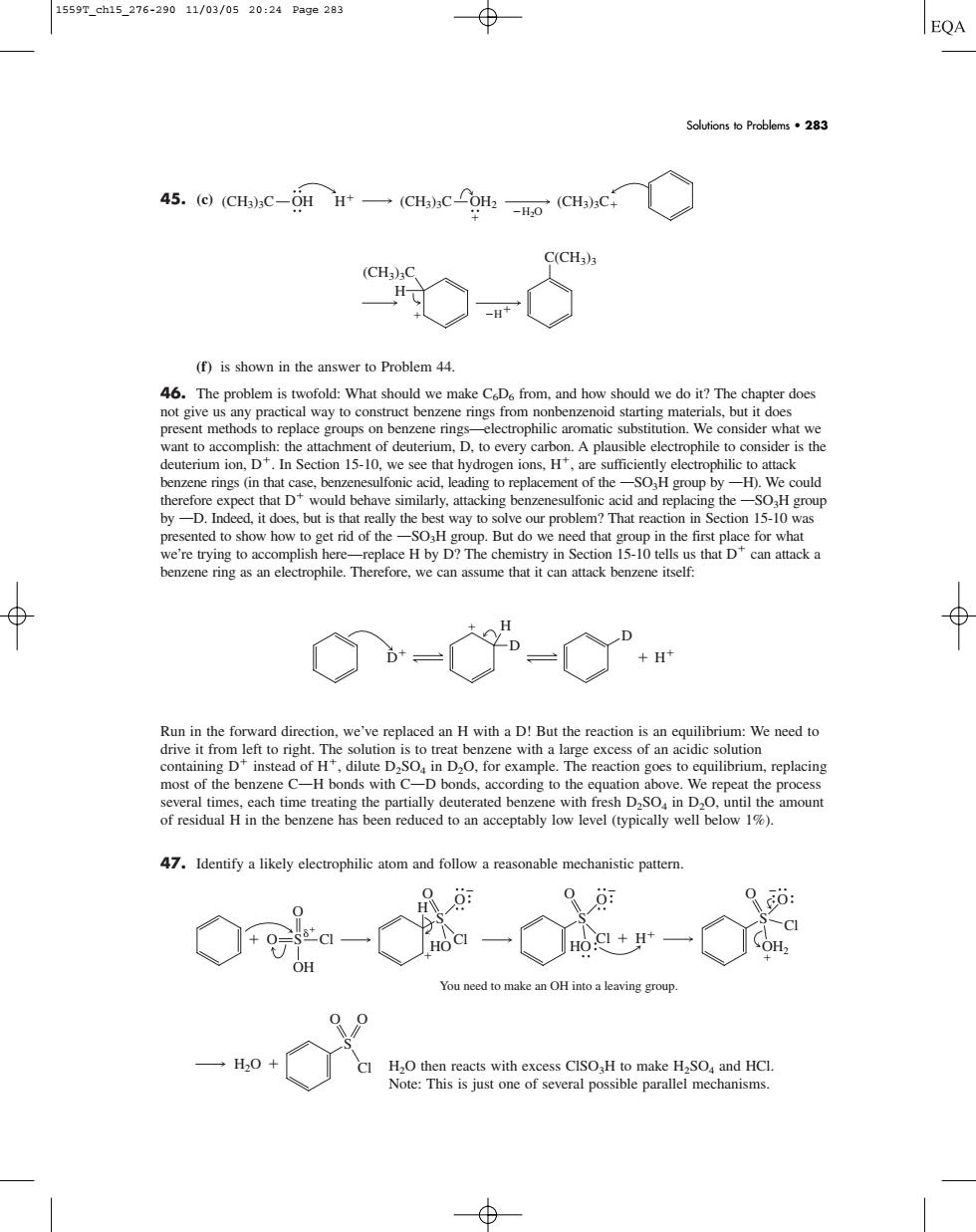正在加载图片...

1559r.ah15276-29011/02/0520:24Page283 EQA Soutions to Problems283 45.ac-一一 C(CH) (CH)C (f)is shown in the answer to Problem 44. .The problem is twofold:What should we make CD from,and how should we do it?The chapter does .A plausible electrophile to consider is the SO,H group by -D. That reaction in Section -1 was -replace Hby D?The chemistry in Section 15-10 tells us that Dcan attack a benzene ring as an electrophile.Therefore.we can assume that it can attack benzene itself: --” ution is to tre 47.Identify a likely elctrophilic atom and follow a reasonable mechanistic pattem : 0o: o+*一 You need to make leaving group +H0 CI H2O then reacts with excess CISO,H to make H2SO and HCI Note:This is just one of several possible parallel mechanisms45. (c) (f) is shown in the answer to Problem 44. 46. The problem is twofold: What should we make C6D6 from, and how should we do it? The chapter does not give us any practical way to construct benzene rings from nonbenzenoid starting materials, but it does present methods to replace groups on benzene rings—electrophilic aromatic substitution. We consider what we want to accomplish: the attachment of deuterium, D, to every carbon. A plausible electrophile to consider is the deuterium ion, D. In Section 15-10, we see that hydrogen ions, H, are sufficiently electrophilic to attack benzene rings (in that case, benzenesulfonic acid, leading to replacement of the OSO3H group by OH). We could therefore expect that D would behave similarly, attacking benzenesulfonic acid and replacing the OSO3H group by OD. Indeed, it does, but is that really the best way to solve our problem? That reaction in Section 15-10 was presented to show how to get rid of the OSO3H group. But do we need that group in the first place for what we’re trying to accomplish here—replace H by D? The chemistry in Section 15-10 tells us that D can attack a benzene ring as an electrophile. Therefore, we can assume that it can attack benzene itself: Run in the forward direction, we’ve replaced an H with a D! But the reaction is an equilibrium: We need to drive it from left to right. The solution is to treat benzene with a large excess of an acidic solution containing D instead of H, dilute D2SO4 in D2O, for example. The reaction goes to equilibrium, replacing most of the benzene COH bonds with COD bonds, according to the equation above. We repeat the process several times, each time treating the partially deuterated benzene with fresh D2SO4 in D2O, until the amount of residual H in the benzene has been reduced to an acceptably low level (typically well below 1%). 47. Identify a likely electrophilic atom and follow a reasonable mechanistic pattern. H2O then reacts with excess ClSO3H to make H2SO4 and HCl. Note: This is just one of several possible parallel mechanisms. H2O S O O Cl O S S Cl O H O OH Cl HO O H HO You need to make an OH into a leaving group. O S O Cl O OH2 S O Cl D D H D H OH H (CH3)3C (CH3)3C OH2 (CH3)3C H2O C(CH3)3 (CH3)3C H H Solutions to Problems • 283 1559T_ch15_276-290 11/03/05 20:24 Page 283���������������������������